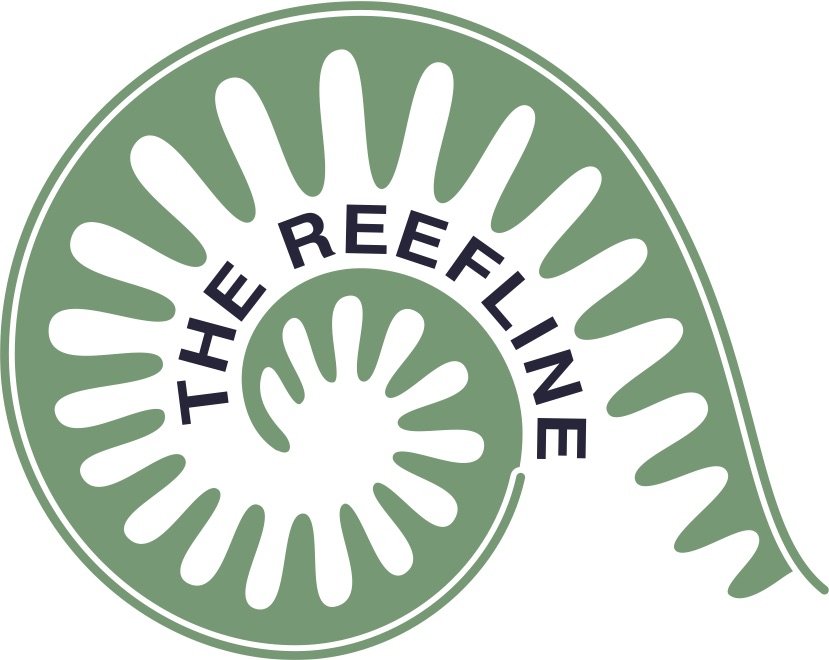
Artists’ Design Criteria for ReefLine Sculptures and Modules.
Prepared by Colin Foord and Cummins Cederberg, Inc.
August 2020, ver2
1.0 Acceptable Materials
Concrete/cement
Limestone/natural rock
Prefabricated artificial reef modules
Heavy Gauge Steel with a minimum ¼” diameter
Steel is not encouraged as an exterior material, but could be used to strengthen the interior of the sculpture in combination with cement (i.e. rebar)
Must minimize exposed rebar or other protruding steel components
Mixture of concrete and steel can be used
Material free of pollutants and debris (hydrocarbons, petroleum, soil, oil, greases, litter, etc.)
No “white goods”, asphalt, or tires
2.0 Other Design Criteria to Consider
Weight
Bottom heavy - It is important to design the center of gravity low in the sculpture to prevent it from being knocked over by storms and wave energy. Need to minimize potential movement/tipping
Conscious of potential movement/rocking if stacking relative to damage
Must weigh 500+ lbs., must consider density of material (i.e. 500lb 3ft structure is better than 500lb 6ft structure)
Nook and Crannies
The more small holes and places to hide for small creatures and fish, the more life the sculpture/module will attract. Bonus if the holes open into small caves
Try to keep smooth surface area to a minimum as it provides suboptimal area for coral/invertebrate settlement
Holes ½”-2” in diameter made purposefully on the exterior of the sculpture/module will make coral transplantation easier and more secure
Open Spaces
It is important not to make the sculpture too delicate/brittle if it is too porous, as this could result in a sculpture/module that is easily damaged during deployment or subsequently from erosion over time.
Open-bottom modules must include a top opening large enough to allow a turtle to escape, for example:
Three-sided modules where each side of the tope opening is at least 36-in in length along its edge.
Four or more sided modules where each side of the top opening is at least 40-in in length along its edge.
Modules with a round opening with a diameter of at least 40-in (oval openings are not allowed unless a 40-in diameter circle space can fit within the oval).
Platform/Pedestal
For some sculptures that are taller than they are wide, it may be necessary to attach it to a wide bottom-heavy pedestal or platform to ensure it won’t be knocked over by storm surge and to prevent rotation or uneven settlement (tilting)
Ideally the sculpture can be securely attached to a cement pedestal before deployment on the barge so that it can be deployed in one piece. Use of rebar and/or threaded stainless steel rods is possible to ensure secure attachment.
Attaching a sculpture to a pedestal in-situ underwater is not recommended
Sculptures that require multiple components that need to be put together underwater in a very specific fashion are strongly discouraged
Height of sculpture – Project specific maximum height limitations will be provided soon.
Adequate room for navigation
The material shall be placed so that the top of the reef does not exceed 1/2 the distance from the bottom to the surface of the water unless a greater distance from the surface is required for safe navigation.
At no time can the distance between the top of the reef and surface of the water be <6ft
Anchoring
Must be able to be firmly anchored to the bottom - Cummins Cederberg to assist in design of anchoring system
Consider making the base thick enough so that they can incorporate some sort of U-bolt to attach a shackle could prove useful
3.0 Manufacturing Considerations
Sculptures and modules should be designed to be deployed from a barge via a crane
The use of stainless steel eye-hooks embedded in the sculpture/module will help make deployment safe, easy, and relatively quick
Try to avoid thin/narrow areas in the sculpture that might break during deployment, handling, or by strong storm surge and erosion over time
Artificial reef structures can be made from the following methods:
Use of molds for cement
Pros
· Cheap (use of donated cement from a factory is possible)
· Ideal for repeatable artificial reef module shapes
Cons:
· Smooth surface texture
· Difficult to create complex nooks and crannies for marinelife colonization
· Freeform Cement
Pros:
· Offers one-of-a-kind handmade artistic expression
· Offers best ability to create surface texture, holes, and interior negative space
Cons:
· Labor intensive
· Carved Oolitic Limestone/Keystone
Pros:
· Chemically identical to Miami’s bedrock and fossil reef geology
· Naturally porous with nooks and crannies for marine life colonization
Cons:
· Relatively brittle compared to concrete
· Obtaining large blocks to work with is a logistical challenge
· Labor intensive
· 3D printed Concrete
Pros:
· Easy to create a lot of interior open space, nooks, and surface texture
· Ability to create unique designs that are otherwise difficult to make via moulds or carving
· Demonstrates cutting edge technology for artificial reef design
· Ability to create repeatable cloned modules with a push of a button
· Artist can create designs with 3D software and never has to touch the final product
· Futuristic, media-bait to be written about
Cons:
· Printer (madco3d.com) located in NH, requires long distance transport
· Printing/transport costs
4.0 Resources
Atlantic and Gulf States Marine Fisheries Commissions (2004). Guidelines for Marine Artificial Reef Materials, 2nd Edition. https://www.gsmfc.org/pubs/SFRP/Guidelines_for_Marine_Artificial_Reef_Materials_January_2004.pdf
Southeast Florida Coral Reef Initiative (SEFCRI) (2011). Guidelines and Management Practices for Artificial Reef Siting, Use, Construction, and Anchoring in Southeast Florida. https://floridadep.gov/sites/default/files/MICCI-18-19.pdf
Chapter 62-330.600, Florida Administrative Code (F.A.C.). General Permit for the Construction of Artificial Reefs. October 1, 2013.
U.S. Army Corps of Engineers Jacksonville District’s Programmatic Biological Opinion (JAXBO). November 20, 2017. http://cdm16021.contentdm.oclc.org/utils/getfile/collection/p16021coll3/id/577
